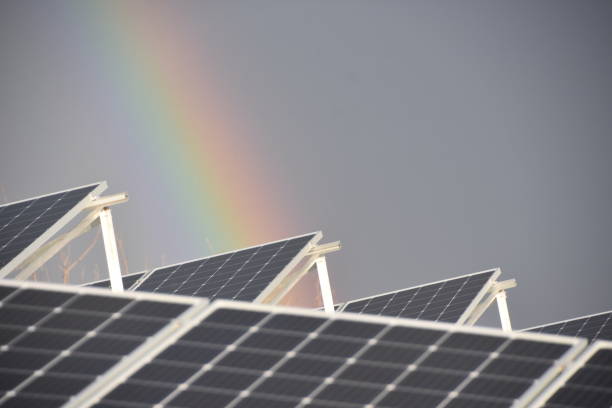Solar panels can operate in partial shade and on cloudy days, but they perform best in direct sunlight. This is so that photovoltaic (PV) panels, which produce electricity by using light’s photons, can do so. Due to the presence of photons in both direct and indirect sunlight, solar panels can function in either setting.
Despite the fact that solar panels can function in low-light conditions, you’ll get the most out of them if they get enough daily direct sunlight. How much direct sunlight do solar panels actually require? Your solar panels should, in theory, be exposed to the sun for at least four hours each day.
Do Solar Panels Need Direct Sun
Despite being able to function without it, solar panels perform best in direct sunlight.
Sunlight from both direct and indirect sources is used to generate electricity by solar panels. The photons carried by both types of sunlight are converted into electric current by the solar panels.
Solar panels can only generate electricity from indirect sunlight if there is no direct sunlight available.
However, performance will suffer in the absence of direct sunlight. That’s because solar panels require 1000 W/m2 of light to operate at their best, and only direct sunlight can provide that much light.
In this Department of Energy resource, you can find out more about direct sunlight (technically known as “direct beam solar radiation”) and diffuse sunlight.
Factors That Determine the Impact of Shade on Your Solar Panels
The Amount and Duration of the Shade
The amount of electricity generated by your panels will decrease the longer they are in the shade. The amount of shade and sunlight can, however, change significantly throughout the day. For instance, if your panels are shaded in the morning, they might receive plenty of sunlight in the afternoon, enabling them to produce enough electricity.
The Type of Inverter Your System Uses
Solar inverters transform the DC electricity that your solar panels produce into the AC electricity you need to power your home.
String inverters and microinverters are the two main categories of inverters. The output of the entire system will be impacted by shading on one panel if a single central string inverter is used. However, in a microinverter system, a single panel will only be impacted by shading, having much less of an effect on the system’s performance as a whole.

Weather Conditions Can Also Impact Sunlight Availability
Do Solar Panels Work on Cloudy Days?
Solar panels do function on cloudy days, but not as well as they would on sunny day. This is because clouds prevent some of the sun’s energy from reaching the ground (or, in this case, your roof).
Depending on how dense the cloud cover is, your solar panels will generate 10% to 60% less power than usual when it is overcast.
Do Solar Panels Work in the Rain?
Solar panel output isn’t affected by rain per se, but it is by the dense cloud cover that follows rain. System output will be 40% to 90% lower when rain clouds are blocking sunlight and darkening the sky.
Despite this, rain has a beneficial side effect that helps to clean the solar panels, even though it can temporarily reduce output. A strong downpour can have a significant impact on your solar output if you live in a dry climate.
Do Solar Panels Work When It Snows?
As long as the snowfall isn’t too deep, solar panels do indeed generate electricity in snowy conditions.
Your solar panel system will produce solar electricity when there is only a light dusting of snow because sunlight can pass through it. And cold weather is advantageous for solar panels because it keeps them from overheating and losing efficiency.
On the other hand, a significant snowfall would block sunlight and significantly lower energy production. The good news is that solar panels are excellent at shedding snow, so this circumstance doesn’t arise very often. This is due to their slippery surfaces, tendency to warm up from heat absorption, and usual installation angle.
The Department of Energy also notes that because snow melts away, it works just like rain to clean solar panels.
How Much Sunlight Do Solar Panels Require to Be Economic?
According to the general rule of thumb, a solar renewable energy system can be profitable with four peak sun hours of sunlight on average per day.
A day’s worth of solar radiation is equal to 4000 watt-hours during four peak hours. In this blog, we discuss the peak sun hours as well as the figures for each state.
When determining whether solar energy is cost-effective for their homes, homeowners should take a variety of factors into account. When figuring out your payback period, you’ll also want to consider regional utility costs and state incentives.
Here you can learn about the solar tax credits, rebates, and incentives that are available to you.
The potential savings from solar are higher when your local utility rates are higher and local incentives are better. With payback times as low as 3.2 years, these factors actually make Massachusetts—which receives an average of just three peak sun hours per day—one of the best states in the country to go solar.
Conclusion
Finally, even though solar panels have improved their ability to withstand a variety of situations, anything that lowers the amount of daylight they receive still has an impact. You can still benefit from a solar system if your roof or garden doesn’t provide the best conditions for solar energy production or if you live in a region that experiences frequent inclement weather.
